Slip-Proofing Your Bathing Experience
Walk-In Showers and Preventing Falls Among the Elderly
Walk-In Showers and Preventing Falls Among the Elderly
The risk of falling and sustaining an injury is a serious concern, particularly for seniors and individuals with mobility challenges. Bathrooms, with their hard surfaces and potential for wet floors, are common sites for such accidents.
Walk-in showers are increasingly recommended by health professionals to mitigate these risks due to their safety-focused design features.
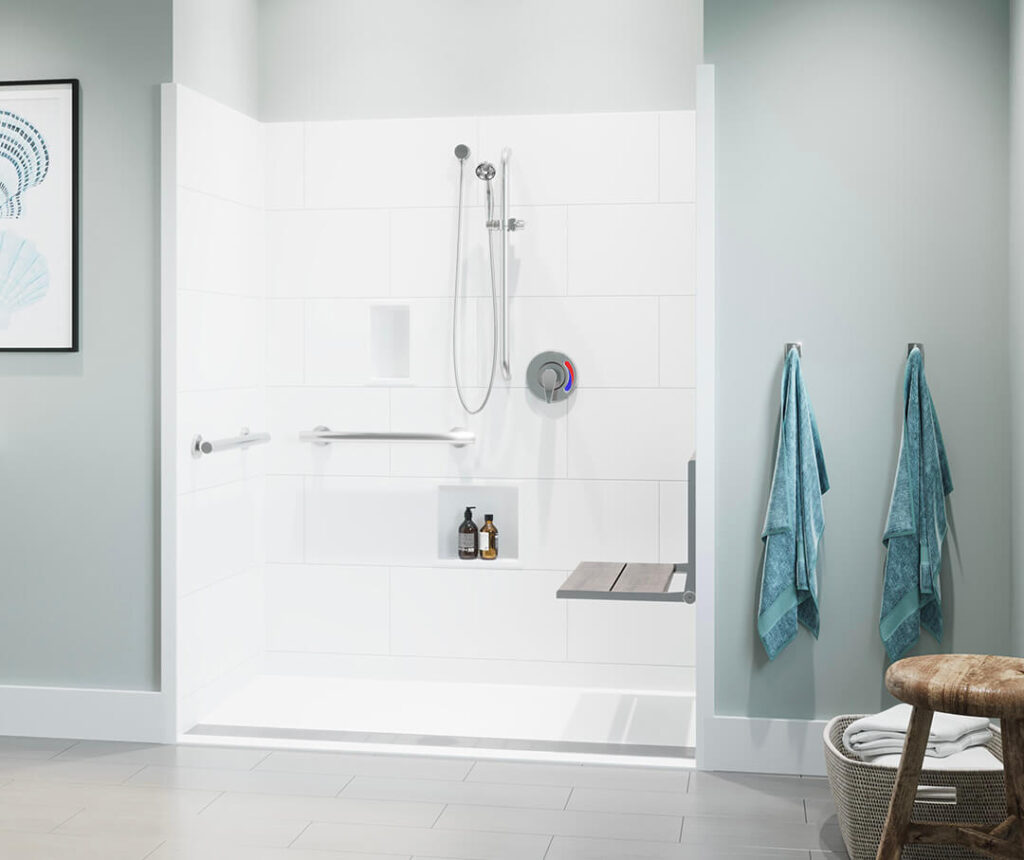
Recent data indicate a worrying trend of fall-related injuries in older adults, with the CDC projecting seven fall deaths per hour by 2030 unless prevention efforts are improved. These falls often result in severe injuries like hip fractures or head trauma.
The design of traditional bathrooms often contributes to this risk, with high tub walls and slippery surfaces being common culprits1.
Walk-in showers reduce the need to step over barriers, a common cause of slips and falls. Their low entry threshold is a key safety feature, providing easier access for those with limited mobility.
Additionally, many walk-in showers are equipped with non-slip flooring, and they can be fitted with handrails and grab bars for extra stability23.
The construction of walk-in showers addresses multiple fall risks. Anti-slip flooring diminishes the chance of slipping, while built-in seats and hand-held showerheads can reduce the need for standing for extended periods, which can be a risk factor for falls.
Moreover, anti-scald valves help prevent sudden movements that can occur when one is startled by unexpected changes in water temperature4.
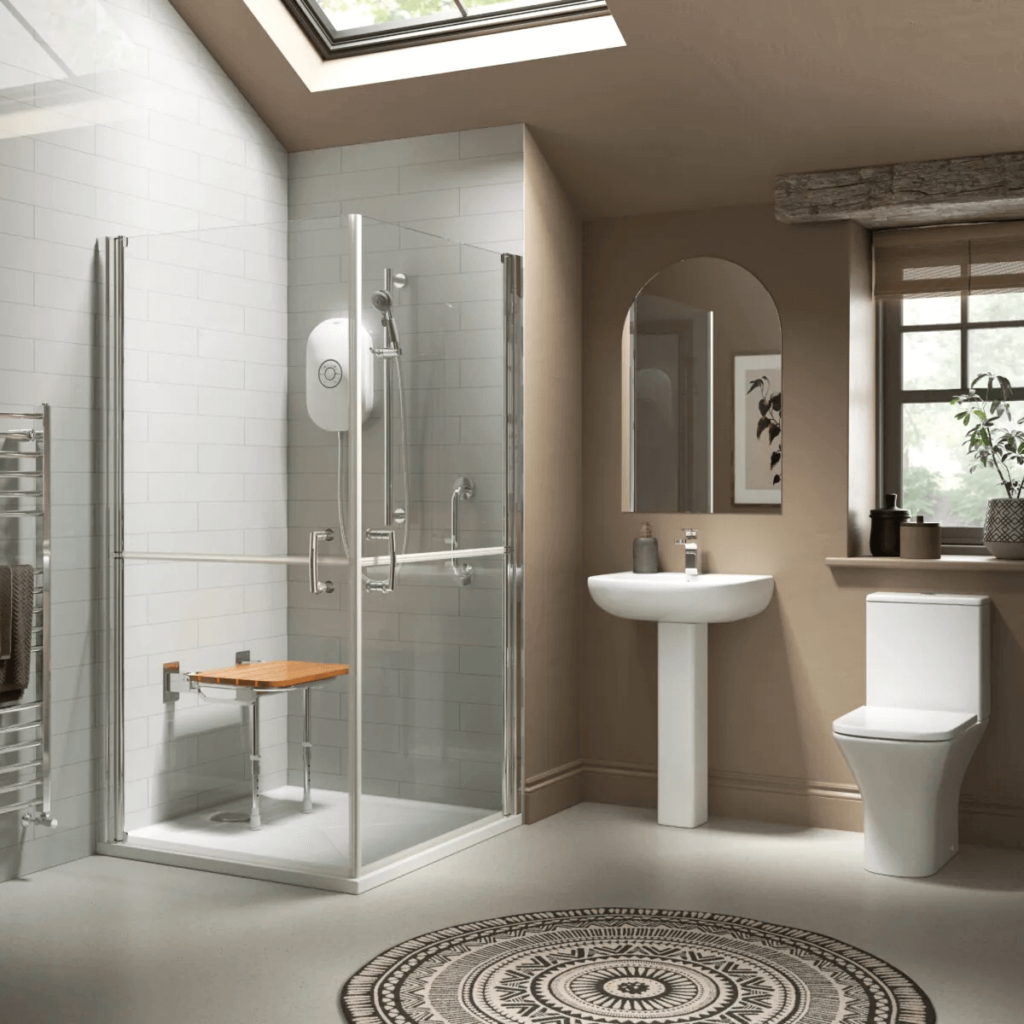
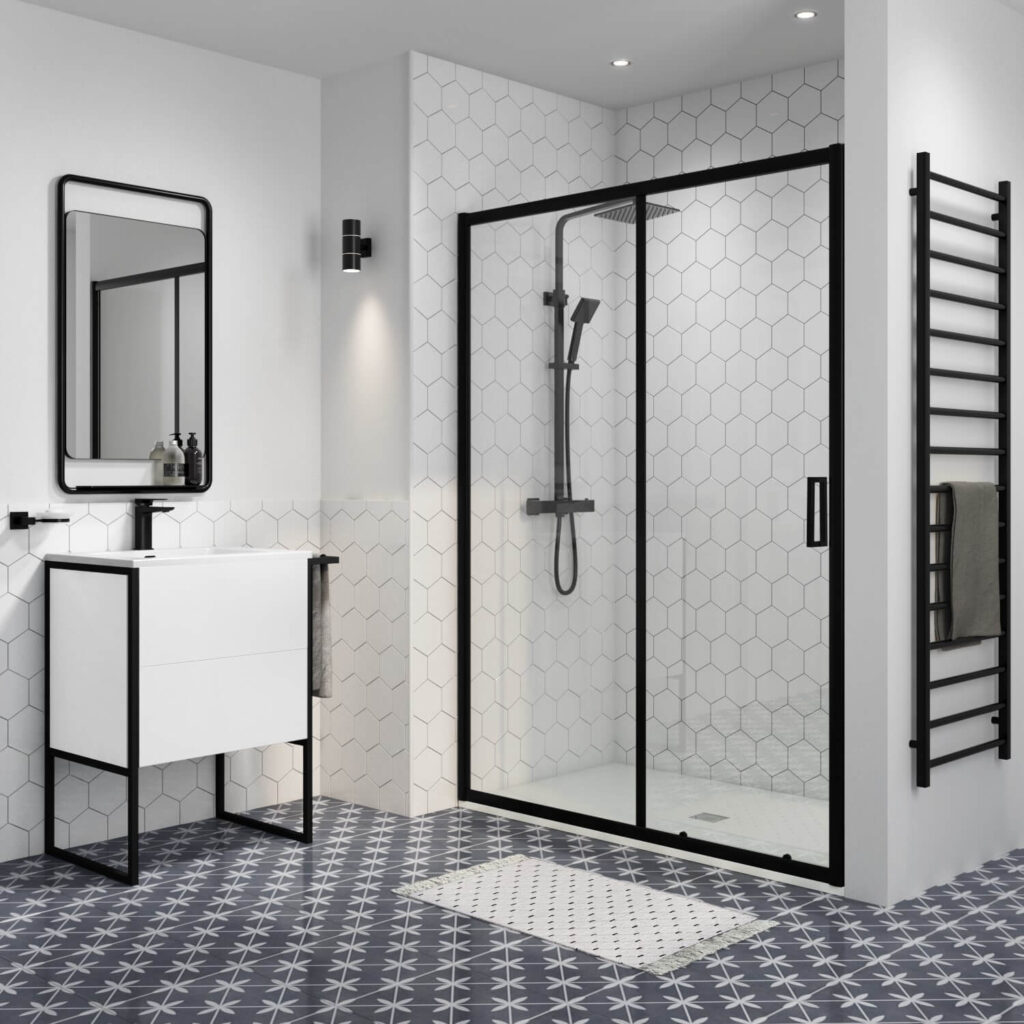
Individuals who can benefit most from walk-in showers include seniors, people with disabilities, those who are undergoing rehabilitation, or anyone with balance or mobility issues. These showers not only provide a safer bathing area but also support a greater degree of independence in personal care56.
Choosing a walk-in shower involves considering the specific needs of the user. Features such as the height and positioning of grab bars, the type of non-slip flooring, and the presence of seating can all be customized to match individual requirements.
Consulting with occupational therapists or other healthcare providers can help in making informed decisions about these features, ensuring that the shower is as safe as it can be for the user7.
Walk-in showers stand out as a significant preventative measure against falls in the bathroom. They offer a blend of functionality and design tailored to enhance safety and foster independence.
When considering a bathroom remodel, a walk-in shower should be a priority for anyone at risk of falling, providing peace of mind and a much safer bathing environment.
Integrating professional guidance from healthcare providers in the decision-making process can further optimize safety and usability18.
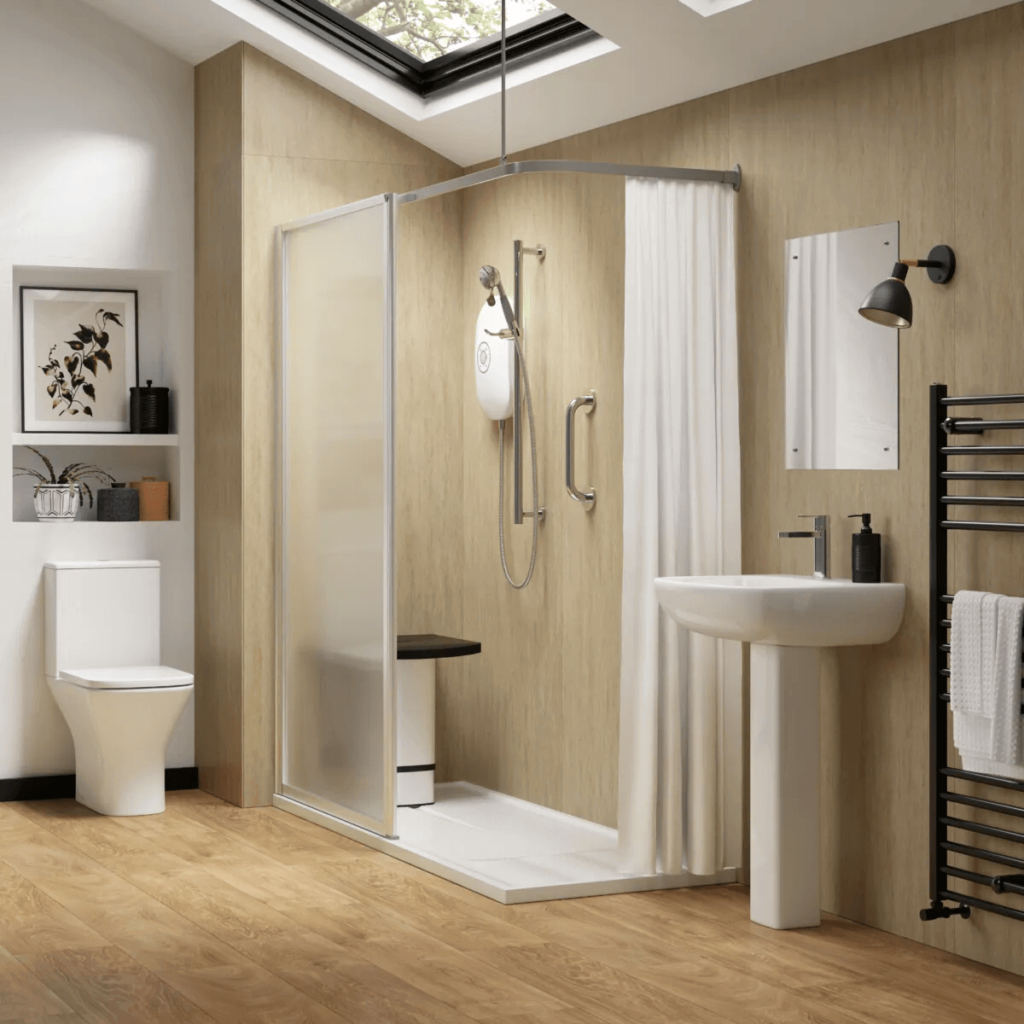
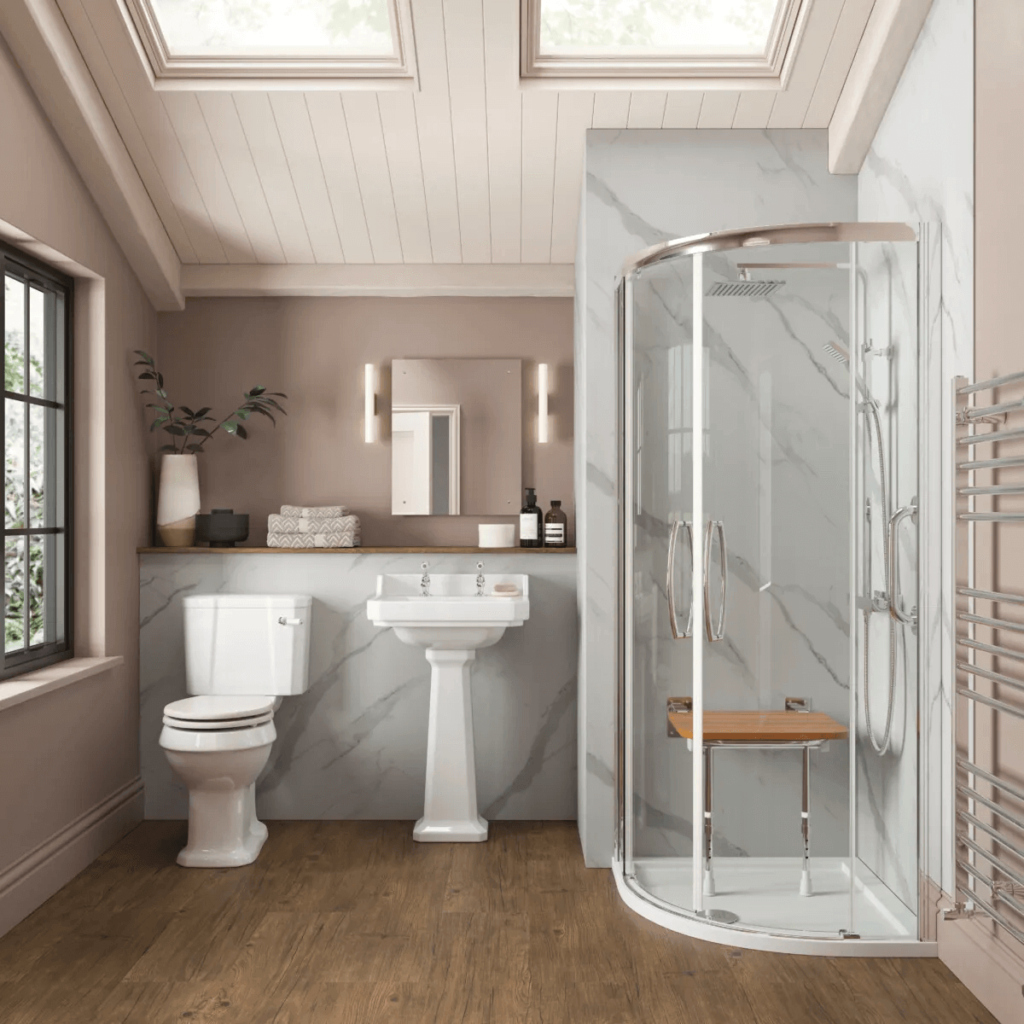
Ergonomic design in walk-in showers can significantly reduce physical strain, a common contributor to falls. These showers can be customized to match the user’s physical capabilities, with controls and showerheads placed within easy reach to avoid overstretching or crouching, which can lead to loss of balance.
Good lighting is crucial in preventing falls, particularly for the elderly who may have impaired vision. Walk-in showers designed with clear glass and strategic lighting help improve visibility, reducing the risk of accidents caused by poor spatial perception.
Walk-in showers can be equipped with features like adjustable body jets and temperature-controlled settings that provide therapeutic benefits.
These features can help improve circulation and muscle function, which are vital in maintaining balance and preventing falls.
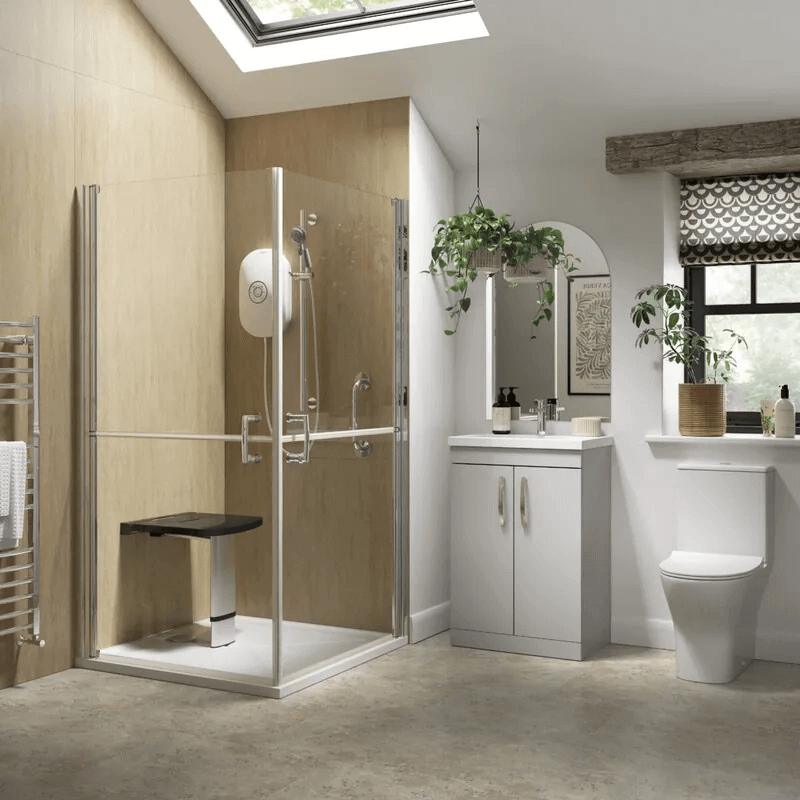
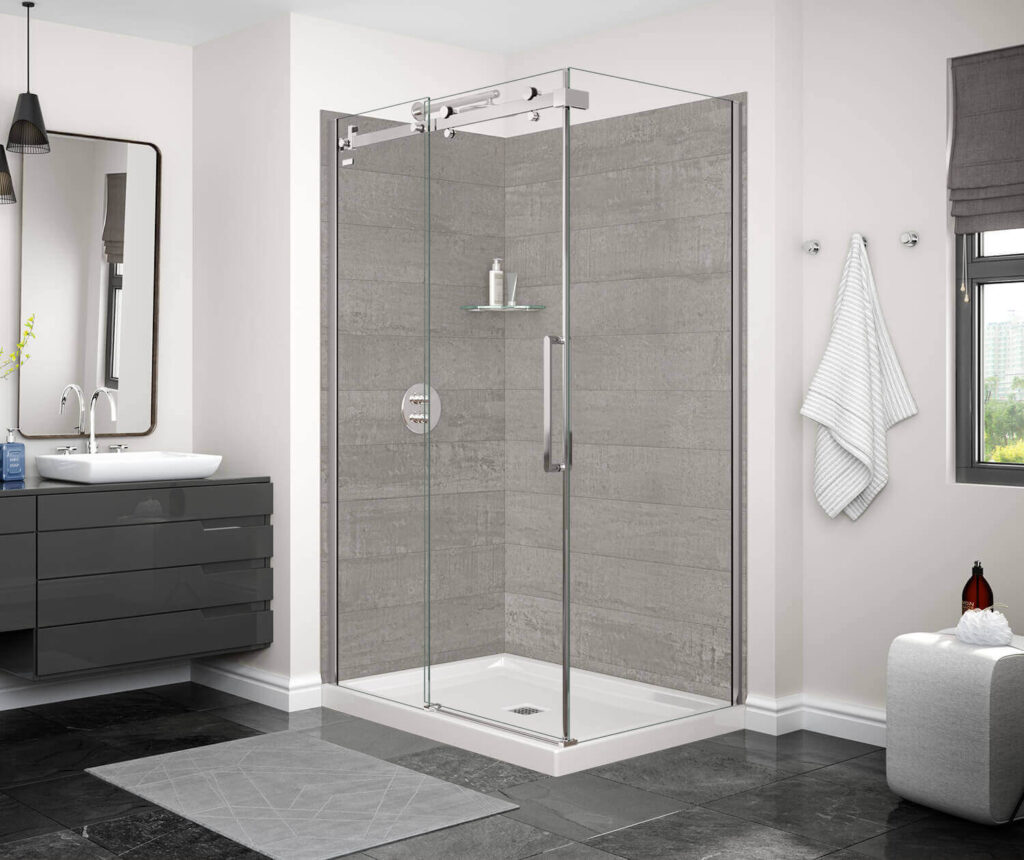
The choice of flooring material in walk-in showers is pivotal for safety. Materials such as textured tile, anti-slip vinyl, or treated stone can provide the necessary grip even when wet, thereby significantly reducing the chance of slipping.
Effective drainage is essential to prevent water build-up on the floor. Walk-in showers should have a well-designed gradient and drainage system to ensure water flows away quickly, keeping the surface as dry as possible to prevent slips.
Regular cleaning and maintenance of walk-in showers are vital to prevent the build-up of soap scum and mildew, which can make surfaces slippery. Non-abrasive cleaners and frequent rinsing can keep the floor safe for use.
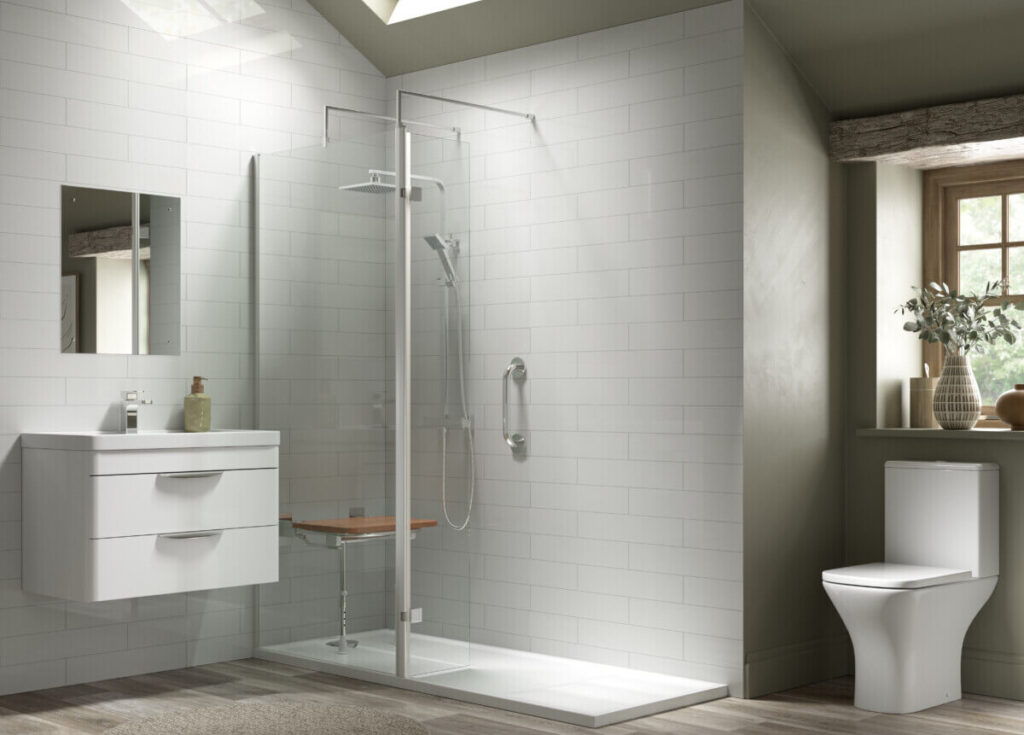
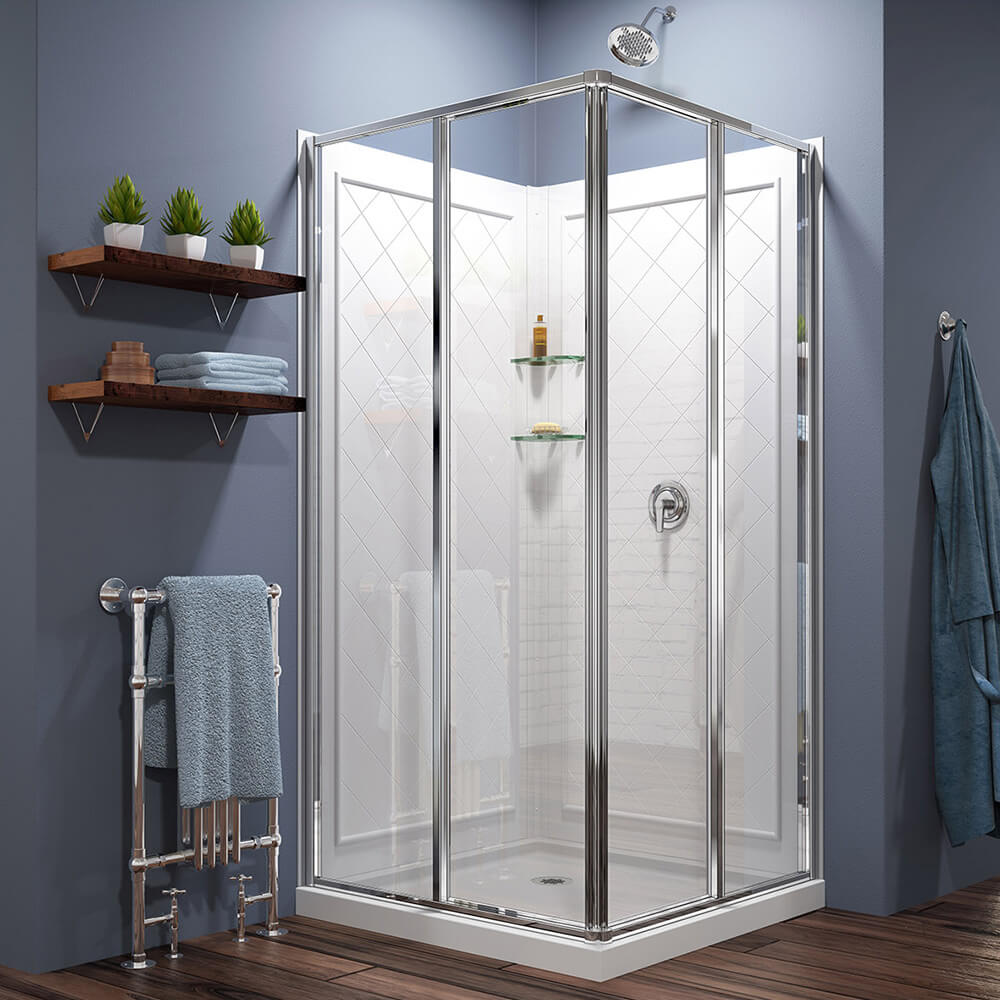
To maximize safety benefits, walk-in showers should be installed by professionals who can ensure that all elements meet the necessary safety standards. Proper installation can prevent issues such as leaks and uneven flooring that may lead to falls.
Personalization can play a significant role in preventing falls. Features such as built-in seats, adjustable handheld showerheads, and easily accessible controls allow users to shower comfortably without compromising their safety.
Slips and falls in showers can lead to serious injuries, especially for the elderly or those with mobility issues. Wet and slippery surfaces increase the risk of accidents, which can result in bruises, fractures, or more severe health complications.
Walk-in showers often have a low threshold for easy entry, non-slip floors, handrails, and seating options to enhance safety. Their open design can eliminate the need to climb over a bathtub rim, reducing the risk of falls.
Walk-in showers reduce fall risks through their low-entry design, built-in seats, grab bars, and slip-resistant flooring. These features collectively provide stability and support for users, particularly the elderly or those with disabilities.
Yes, walk-in showers are designed to promote independence by allowing individuals to bathe without assistance. Their safety features enable users to manage their personal hygiene with dignity and comfort, even with limited mobility.
Consider the user’s specific needs, such as the height of the threshold, the type of non-slip flooring, the placement of grab bars, and additional features like seating or hand-held showerheads to ensure maximum safety and comfort.
Walk-in showers are designed with preventative measures like anti-slip flooring, strategic placement of grab bars, and low-entry thresholds to significantly reduce the likelihood of falls in the shower.
Ergonomic designs in walk-in showers facilitate ease of movement, with features like adjustable showerheads, controls within easy reach, and comfortable seating to minimize physical strain and prevent falls.
Proper lighting is crucial in walk-in showers to enhance visibility and prevent accidents. It helps users navigate the space safely, especially those with vision impairments, by clearly illuminating the floor and fixtures.
Walk-in showers can offer therapeutic benefits such as hydrotherapy and steam options, which can help with relaxation, improve circulation, and aid in muscle recovery, contributing to overall stability and reducing fall risks.
Common slip-resistant materials for walk-in showers include textured tiles, anti-slip mats, and floor treatments that provide extra grip underfoot to prevent slips and falls, even when the surface is wet.
Proper drainage in walk-in showers helps to quickly channel water away, keeping the floor dry and reducing the risk of slips. A well-designed drainage system is key to maintaining a safe, non-slip shower environment.
Regular cleaning to remove soap residue and mildew, checking for wear and tear on anti-slip surfaces, and ensuring that all safety features like grab bars are secure can maintain the safety of walk-in showers.
Walk-in showers should comply with ADA guidelines and local building codes, which include specifications for floor slip resistance, grab bar installation, threshold height, and overall accessibility.
Personalized features such as adjustable showerheads, tailored placement of controls and grab bars, and customized seating can enhance safety, ensuring that the walk-in shower accommodates the unique needs of the user.
Arizona’s most trusted residential window and bath remodeling company Serving Phoenix, Tucson, and the surrounding areas since 1995.
8399 W Van Buren St, Unit 101
Tolleson, AZ 85353
(602) 780-0559
4755 S Coach Dr.
Tucson, AZ 85714
(520) 748-7292
7946 E Broadway Blvd,
Tucson, AZ 85710
(520) 667-2701
Arizona’s most trusted residential window and bath remodeling company Serving Phoenix, Tucson, and the surrounding areas since 1995.